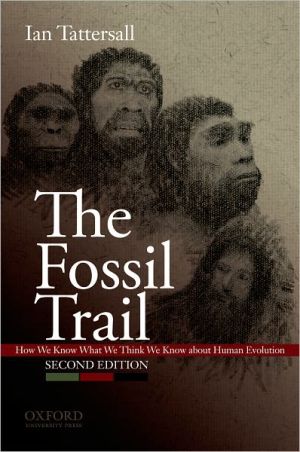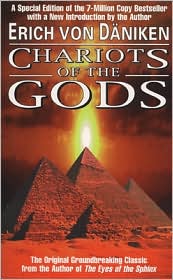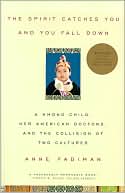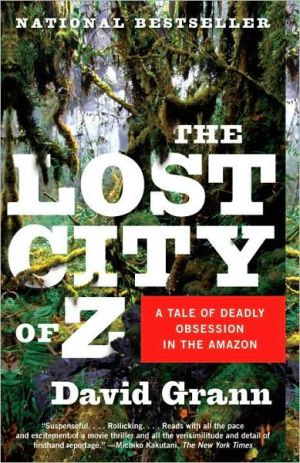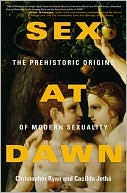The Fossil Trail: How We Know What We Think We Know about Human Evolution
Extensively revised and updated, the second edition of The Fossil Trail: How We Know What We Think We Know About Human Evolution offers a colorful history of fossil discoveries and a revealing insider's look at how these finds have been interpreted—and misinterpreted—through time. It covers the dramatic increase in the size and scope of the human fossil record as well as new techniques for analyzing and interpreting that record that have emerged in the thirteen intervening years since the...
Search in google:
One of the most remarkable fossil finds in history occurred in Laetoli, Tanzania, in 1974, when anthropologist Andrew Hill (diving to the ground to avoid a lump of elephant dung thrown by a colleague) came face to face with a set of ancient footprints captured in stone—the earliest recorded steps of our far-off human ancestors, some three million years old. Today we can see a recreation of the making of the Laetoli footprints at the American Museum of Natural History, in a stunning diorama which depicts two of our human forebears walking side by side through a snowy landscape of volcanic ash. But how do we know what these three-million-year-old relatives looked like? How have we reconstructed the eons-long journey from our first ancient steps to where we stand today? In short, how do we know what we think we know about human evolution? In The Fossil Trail, Ian Tattersall, the head of the Anthropology Department at the American Museum of Natural History, takes us on a sweeping tour of the study of human evolution, offering a colorful history of fossil discoveries and a revealing insider's look at how these finds have been interpreted—and misinterpreted—through time. All the major figures and discoveries are here. We meet Lamarck and Cuvier and Darwin (we learn that Darwin's theory of evolution, though a bombshell, was very congenial to a Victorian ethos of progress), right up to modern theorists such as Niles Eldredge and Stephen Jay Gould. Tattersall describes Dubois's work in Java, the many discoveries in South Africa by pioneers such as Raymond Dart and Robert Broom, Louis and Mary Leakey's work at Olduvai Gorge, Don Johanson's famous discovery of "Lucy" (a 3.4 million-year-old female hominid, some 40% complete), and the more recent discovery of the "Turkana Boy," even more complete than "Lucy," and remarkably similar to modern human skeletons. He discusses the many techniques available to analyze finds, from fluorine analysis (developed in the 1950s, it exposed Piltdown as a hoax) and radiocarbon dating to such modern techniques as electron spin resonance and the analysis of human mitochondrial DNA. He gives us a succinct picture of what we presently think our "family tree" looks like, with at least three genera and perhaps a dozen species through time (though he warns that this greatly underestimates the actual diversity of hominids over the past two million or so years). And he paints a vivid, insider's portrait of paleoanthropology, the dogged work in the broiling sun, searching for a tooth, or a fractured corner of bone, amid stone litter and shadows, with no guarantee of ever finding anything. And perhaps most important, Tattersall looks at all these great researchers and discoveries within the context of their social and scientific milleu, to reveal the insidious ways that the received wisdom can shape how we interpret fossil findings, that what we expect to find colors our understanding of what we do find. Refreshingly opinionated and vividly narrated, The Fossil Trail is the only book available to general readers that offers a full history of our study of human evolution. A fascinating story with intriguing turns along the way, this well-illustrated volume is essential reading for anyone curious about our human origins. Publishers Weekly Head of Manhattan's American Museum of Natural History's anthropology department, Tattersall here weaves a vigorous historical narrative of paleontologists' attempts to reconstruct human origins from the fossil record. Beginning with the unearthing of Neanderthals and ``Java Man,'' he carefully sifts through a remarkable succession of hominid finds from Africa, Eurasia, China, Indonesia and Israel, including Don Johanson's 1973 discovery in Ethiopia of ``Lucy,'' a 3.4-million-year-old female hominid skeleton, and the Leakey team's 1984 find, ``Turkana Boy,'' a 1.6-million-year-old Homo erectus skeleton uncovered in Kenya. Citing disagreements among scientists over interpretations of radiocarbon dating, comparative anatomy and biochemical techniques, Tattersall unreels a catalogue of paleoanthropological misidentifications, dogmas and misperceptions. He draws a hypothetical evolutionary tree that includes three genera of our hominid ancestors-Homo and Australopithecus (accepted by conventional wisdom) plus a new genus, Paranthropus-altogether embracing a dozen species leading to Homo sapiens. Illustrated. (Feb.)
Preface xiiiPreface to the First Edition xvAbbreviations xviiSite Map of Western Europe xviiiSite Map of Central Europe xixSite Map of The Caucusus and the Near East xxSite Map of East Asia xxiSite Map of Northern Africa xxiiSite Map of Southern Africa xxiiiChapter 1 Before Darwin 1Time and the Diversity of Life 1Enter the Antiquarians 5Paleontology 8Neanderthal Debut 11Chapter 2 Darwin and After 15Natural Selection 16Early Disquisitions on Neanderthals 18Antiquarianism Transforms into Archaeology 22Evolving Notions of Early Humans 26Chapter 3 Pithecanthropus 29Java Man 30Changing Views of the Neanderthals 35Chapter 4 The Early Twentieth Century 39Genetics and Species 40The Hominid Fossil Record Grows 42Dawson's Dawn Man 45The "Neanderthal Phase of Man" 48Chapter 5 Out of Africa... 51Australopithecus 52Peking Man 56Back to Java 60Chapter 6 ...Always Something New 65International Acceptance 66A Prophet in His Own Country... 71African Genesis 72Olduvai Gorge 76Outside Africa 78Chapter 7 The Synthesis 85A Remarkable Convergence 87Population Thinking 89Paleoanthropology Capitulates 91Radiometric Dating 93The Record Expands and Stereotypes Fall 95Chapter 8 Olduvai Gorge 99Zinjanthropus 100"Jonny's Child" 102A Dating Revolution 104Handy Man 106Collegial Mutterings 109Chapter 9 Rama's Ape Meets the Mighty Molecule 113A New Hominid 113A Top-Heavy Edifice 115Enter the Molecules 116What Is a Hominid? 120Chapter 10 Omo and Turkana 121Hominid Catastrophism and the Single-Species Hypothesis 121The Omo and Ethiopia 122Koobi Fora andthe Turkana Basin 124The Artifactual Record 129More from Koobi Fora 131Chapter 11 Hadar, Lucy, and Laetoli 133Hadar, Lucy, and the First Family 133Bodo and Laetoli 138One Species or Two? 141A Stem Hominid? 143Bipeds and Climbers? 145Why Bipedality? 147Chapter 12 Theory Intrudes 151Phyletic Gradualism or Punctuated Equilibria? 151Reluctant Acceptance 154Reconstructing Phylogeny 156Scenarios and Trees 160Chapter 13 Eurasia and Africa: The Record Grows 163The Chinese Record 164Homo heidelbergensis 166Complex Lifeways 168Archaeological Transition 171East and South 173Chapter 14 Turkana and Olduvai-Again 177The "Turkana Boy" 177Back to Olduvai 180The Unthinkable Thought 182The Black Skull 184Graciles and Robusts 185Faunal Turnover 186Chapter 15 The Caveman Vanishes 189Understanding the Caves 189Diverse Records 191A Complex Picture 194Experimental Archaeology 195Other Influences 197The Neanderthal View of the World 200Chapter 16 Candelabras and Continuity 203The Multiregional Model 203The Diversity Perspective 207A Single Origin 209The Mighty Mitochondrion 210Refinements in Dating 211Levantine Coexistence 213Chapter 17 Another Fin de Siecle 217Diet and Isotopes 218Neanderthal Environmental Preferences 219The Neanderthal Body 221DNA from Neanderthals 223Hybrid Red Herrings 225High-Tech Morphometry 227Atapuerca: A Fossil Cornucopia 228Diversity Among Early Europeans 231Out of Africa for the First Time 234Moving East 236"African Homo erectus": More Diversity? 240Early Homo sapiens? 242Evo-Devo 243A "Human Revolution"? 244"Adams" and "Eves" 245The Mysterious Hominid of Flores 247Chapter 18 Back to the Beginning 251A Veritable Menu of Earliest Hominids 251Millennium Man 253Sahelanthropus 254Back to Kenya 257More Entrants 259Hadar Again 260A Tale of Two Skeletons 262A New "Robust" 265Isotopes Again 267New Australopiths from Ethiopia 268Homo Revisited 270Prospects 275Chapter 19 So, Where Are We? 277Systematics-The Key to Understanding the Hominids 278Becoming Human 283Epilogue 293Bibliography 295Index 320
\ Publishers Weekly - Publisher's Weekly\ Head of Manhattan's American Museum of Natural History's anthropology department, Tattersall here weaves a vigorous historical narrative of paleontologists' attempts to reconstruct human origins from the fossil record. Beginning with the unearthing of Neanderthals and ``Java Man,'' he carefully sifts through a remarkable succession of hominid finds from Africa, Eurasia, China, Indonesia and Israel, including Don Johanson's 1973 discovery in Ethiopia of ``Lucy,'' a 3.4-million-year-old female hominid skeleton, and the Leakey team's 1984 find, ``Turkana Boy,'' a 1.6-million-year-old Homo erectus skeleton uncovered in Kenya. Citing disagreements among scientists over interpretations of radiocarbon dating, comparative anatomy and biochemical techniques, Tattersall unreels a catalogue of paleoanthropological misidentifications, dogmas and misperceptions. He draws a hypothetical evolutionary tree that includes three genera of our hominid ancestors-Homo and Australopithecus (accepted by conventional wisdom) plus a new genus, Paranthropus-altogether embracing a dozen species leading to Homo sapiens. Illustrated. (Feb.)\ \ \ \ \ Library JournalThis informative and highly readable introduction to paleoanthropology by the head of the anthropology department at the American Museum of Natural History surveys the major discoveries in hominid evolution (fossils and artifacts) and examines both past and present principal interpretations of this growing empirical evidence for the complex emergence of humankind. Important fossils from Olduvai and other sites are critically discussed in terms of modern hominid taxonomy within the framework of climatic fluctuations, environmental changes, and morphological variety (species diversity). Throughout this detailed story, Tattersall argues against both human orthogenesis and the one-species hypothesis for explaining hominid evolution. He focuses on australopithecine diversity and behavior, those questions still surrounding Homo erectus and Homo neanderthalensis, and the recent appearance of our own unique species in Africa. A fascinating and provocative overview of human paleontology that is highly recommended for all anthropology collections.-H. James Birx, Canisius Coll., Buffalo, N.Y.\ \ \ BooknewsTattersall, head of the Anthropology Department at the American Museum of Natural History, presents a sweeping tour of the study of human evolution, offering a fascinating history of fossil discoveries, including some very recent finds, and a revealing look at how these finds have been interpreted--and misinterpreted--throughout history. Annotation c. Book News, Inc., Portland, OR (booknews.com)\ \
